Ceylon Blue Sapphire
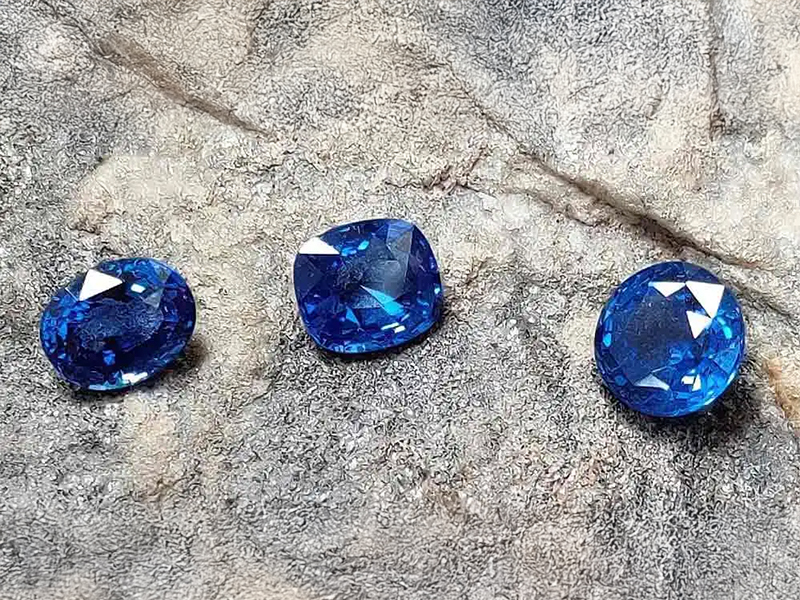
Ceylon Blue Sapphire
Sri Lanka (formally called “Ceylon”), is still the top producer for fine gemstones in the world. For thousands of years fine sapphires have been found in this special place. Most notable are the Blue sapphires. Blue sapphires are the most popular and sought after type of sapphire. They have been the prized possessions of emperors, kings, queens and collectors for thousands of years. Still today, Blue sapphire is the most well-known and in demand colored gemstone. Royalty gives sapphires over diamonds as engagement rings because they are known to be far rarer than diamonds.
Blue sapphires come in various hues from very light pale baby blue to a very rich royal blue. A sapphire that is black should not be called a blue sapphire; this is a commercial quality stone. If a sapphire is to be called blue, it must not have more than 15% secondary color tones within the stone such as yellow, green or purple. Sapphires that have secondary colors that are significant should be classified “greenish-blue” or “purplish-blue” “violet” etc. These are not Blue sapphires. These should be classified differently and priced accordingly. Royal blue, Cornflower blue, Peacock blue are the mostly commonly preferred due to their vivid colors. Blue sapphire is typically cut in cushion, round, oval and emerald shapes to retain the carats and the color. Other popular cuts are pears, hearts and marquises.
Sri Lanka has long celebrated as the main source for large blue sapphires that are above the size of 100 carats. Incidentally, 60% of the largest gemstones including sapphires had been sourced from this small island in the Indian Ocean. The world’s largest faceted blue sapphire,’ Blue Giant of the Orient’ owns its origin to Sri Lanka. Discovered in Sri Lanka in 1907, this brilliant blue 486 carat large sapphire was purchased by an anonymous American buyer and remained out of the limelight until it resurfaced at Christie’s jewels auction catalogue in 2004. World’s fourth-largest Sapphire, Blue Belle of Asia has also been mined from Ratnapura, Sri Lanka in 1926. The 400 carat peacock blue sapphire mounted on a necklace of diamonds and platinum fetched 17 million dollars at a rare jewelry auction in Geneva by Christie’s in 2014, which is the highest ever price set on a sapphire.
The engagement ring given to Lady Diana Spencer by Charles, the Prince of Wales with a 12 carat Ceylon Sapphire set in 18K white gold is maybe the most popular piece of Jewelry with a Ceylon Sapphire. The royal sapphire originated from a mine in Pelmadulla, Sri Lanka, renowned for superior quality sapphires. Generations later the same ring was given to Kate Middleton, the Duchess of Cambridge by Prince William, continuing the legacy of Ceylon Sapphires.
7 Reasons the Ceylon Blue Sapphire is a Timeless Treasure
In the pantheon of precious gems, one stone has captivated the hearts of royalty, adventurers, and romantics for millennia: the blue sapphire. Yet, among all the world’s sapphires, one name is spoken with a unique reverence, a name that signifies the very pinnacle of quality, brilliance, and heritage—the Ceylon Blue Sapphire. This is not merely a gemstone; it is the soul of our island, Sri Lanka, the ancient land once known as Ratna Dweepa, “The Island of Gems.” Its mesmerizing hue is more than just a color; it is a legacy, a symbol of a history as deep and luminous as the stone itself. This definitive guide explores the profound allure of this legendary gem, uncovering why it remains the world’s most coveted and cherished blue sapphire.
Table of Contents
- The Enduring Legacy of Ratna Dweepa: A Rich History of the Ceylon Blue Sapphire
- Ancient Roots and Royal Adornment
- The Gem that Captured the World’s Heart
- The Science of Splendor: What Gives the Ceylon Blue Sapphire Its Unmatched Glow?
- Gemological Fingerprint: Corundum and Trace Elements
- The “Luminosity Factor”: A Brilliance Beyond Compare
- Cornflower vs. Royal Blue: Understanding the Prized Hues of the Ceylon Blue Sapphire
- The Archetypal “Cornflower Blue” Ceylon Blue Sapphire
- The Majestic “Royal Blue” Ceylon Blue Sapphire
- A Connoisseur’s Guide: How to Evaluate the Quality of a Ceylon Blue Sapphire
- Color: The Dominant Value Factor for a Ceylon Blue Sapphire
- Clarity: The Natural Signature of a Ceylon Blue Sapphire
- Cut: Unleashing the Gem’s Inner Fire and Life
- Carat Weight: The Rarity of Significant Size
- From Mine to Masterpiece: The Authentic Journey of a Ceylon Blue Sapphire
- Ethical Provenance: The Artisanal Mines of Sri Lanka
- The Lapidary’s Art: Transforming Rough into Radiance
- A Transparent Look at Heat Treatment
- Investing in a Legend: Why the Ceylon Blue Sapphire is a Timeless Asset
- A Tangible Store of Value
- The Ultimate Symbol of Love and Commitment
- Frequently Asked Questions (FAQs) About the Ceylon Blue Sapphire
- Conclusion: Owning a Piece of Sri Lanka’s Luminous Soul
1. The Enduring Legacy of Ratna Dweepa: A Rich History of the Ceylon Blue Sapphire
The story of the Ceylon Blue Sapphire is the story of Sri Lanka itself. Long before modern gemology, travelers and traders were drawn to our shores in search of these radiant blue stones. Our island’s connection to gems is so ancient that it is woven into folklore and the earliest recorded histories.
Ancient Roots and Royal Adornment
Sri Lanka is widely considered the world’s oldest and most consistent source of fine sapphires. Legends suggest that King Solomon wooed the Queen of Sheba with precious gems from Ceylon. The great 13th-century explorer Marco Polo documented the island’s incredible wealth of sapphires, rubies, and other gems, noting that they were the finest in the world. For thousands of years, the alluvial gravel beds of regions like Ratnapura (meaning “City of Gems”) have been yielding these treasures, supplying the coffers of kings, emperors, and sultans across the globe. This unmatched provenance means that when you hold a Ceylon Blue Sapphire, you are connecting with an unbroken chain of history that stretches back into the mists of time.
The Gem that Captured the World’s Heart
While always treasured, the Ceylon Blue Sapphire was catapulted to global superstardom in 1981, when Prince Charles presented Lady Diana Spencer with an engagement ring featuring a magnificent 12-carat oval Ceylon Blue Sapphire surrounded by diamonds. This single piece of jewelry cemented the gem’s status as a symbol of elegance, romance, and timeless style. Today, worn by Catherine, Princess of Wales, the ring continues to be an enduring testament to the sapphire’s majestic and everlasting appeal.
2. The Science of Splendor: What Gives the Ceylon Blue Sapphire Its Unique Glow?
What is it, precisely, that makes a sapphire from Sri Lanka so distinct and desirable? The answer lies in its unique gemological makeup and the way it interacts with light.
Gemological Fingerprint: Corundum and Trace Elements
Like all sapphires, the Ceylon Blue Sapphire is a variety of the mineral Corundum (crystalline aluminum oxide). Its coveted blue color is the result of a serendipitous geological process where trace amounts of the elements iron () and titanium () were incorporated into the crystal’s structure as it formed under immense heat and pressure millions of years ago. The specific concentrations and interplay of these elements dictate the exact hue and saturation of the blue.
The “Luminosity Factor”: A Brilliance Beyond Compare
The defining characteristic that truly sets the Ceylon Blue Sapphire apart is its exceptional luminosity. Sapphires from other famous locations, such as Australia or Thailand, can often be overly dark or possess a slightly inky quality. In contrast, Ceylon sapphires have a unique ability to perform beautifully even in low-light conditions. They possess a bright, lively brilliance that seems to emanate from within the stone itself. This is often attributed to the higher clarity and a slightly lower concentration of iron, which results in a purer, more transparent blue that allows light to pass through and return to the eye with maximum sparkle. This inherent “life” is the signature of a true Ceylon gem.
3. Cornflower vs. Royal Blue: Understanding the Prized Hues of the Ceylon Blue Sapphire
While the range of blue is varied, two specific color grades have become the benchmarks against which all other blue sapphires are measured.
The Archetypal “Cornflower Blue” Ceylon Blue Sapphire
This is arguably the most famous and sought-after hue. “Cornflower blue” describes a vivid, medium-toned blue that is not too dark and not too light, often with a subtle, almost imperceptible violet undertone. The color is highly saturated and has a soft, velvety appearance that is both striking and sophisticated. It is named after the cornflower (Centaurea cyanus) because it perfectly mirrors the vibrant yet gentle hue of the flower’s petals. A fine cornflower Ceylon Blue Sapphire is a gemological treasure of the highest order.
The Majestic “Royal Blue” Ceylon Blue Sapphire
As the name suggests, “royal blue” is a deeper, more intense shade. It is a highly saturated, vivid blue with a slightly darker tone than its cornflower counterpart. A royal blue sapphire exudes a sense of power, depth, and luxury. While the cornflower blue is praised for its delicate beauty, the royal blue is celebrated for its commanding presence. Both hues are considered top-tier, and the preference between them is often a matter of personal taste. A true royal blue must be a pure, intense blue, free from any grayness or darkness that would impede its brilliance.
4. A Connoisseur’s Guide: How to Evaluate the Quality of a Ceylon Blue Sapphire
To truly appreciate and assess a gem of this caliber, one must look beyond its beauty and apply the rigorous standards of gemology, known as the 4Cs.
Color: The Dominant Value Factor for a Ceylon Blue Sapphire
Color is the most critical attribute. A top-tier Ceylon Blue Sapphire will have a rich, evenly distributed color. The three components of color are:
- Hue: The primary color, which should be as close to a pure blue as possible, with slight violet modifiers being highly desirable.
- Tone: The lightness or darkness of the color. A medium to medium-dark tone is ideal, as it is rich in color without sacrificing brilliance.
- Saturation: The intensity of the color. The more saturated and vivid the blue, the more valuable the stone.
Clarity: The Natural Signature of a Ceylon Blue Sapphire
Unlike diamonds, where flawlessness is the goal, sapphires are expected to have some internal features, or inclusions. In fact, certain inclusions are welcomed as proof of natural origin. A common and desirable inclusion in a Ceylon Blue Sapphire is “silk”—fine, intersecting needles of the mineral rutile that can give the stone that coveted velvety appearance. The standard for a high-quality sapphire is that it be “eye-clean,” meaning no inclusions are readily visible to the naked eye.
Cut: Unleashing the Gem’s Inner Fire and Life
The cut is of paramount importance. A master lapidary will meticulously plan the cut to achieve several goals simultaneously: maximize the richness of the face-up color, enhance the stone’s brilliance and sparkle, minimize the visibility of inclusions, and retain as much carat weight as possible. A well-cut Ceylon Blue Sapphire will be lively and scintillating, with no dull or washed-out areas.
Carat Weight: The Rarity of Significant Size
As with all precious gems, larger stones are exponentially rarer than smaller ones. While beautiful Ceylon sapphires are available in all sizes, stones of fine quality become exceptionally rare and valuable above the 5-carat mark. A gem-quality Ceylon Blue Sapphire over 10 carats is considered a world-class treasure and a significant investment piece.
5. From Mine to Masterpiece: The Authentic Journey of a Ceylon Blue Sapphire
Understanding the journey of a sapphire from the earth to a piece of fine jewelry adds another layer of appreciation for its rarity and the human effort involved.
Ethical Provenance: The Artisanal Mines of Sri Lanka
The vast majority of sapphire mining in Sri Lanka is still done using traditional, small-scale methods that have been passed down through generations. In the gem-rich lands of Ratnapura and Elahera, miners sink pits to reach the ancient, gem-bearing alluvial gravels (known as “illam”). This method is labor-intensive but has a significantly lower environmental impact than large-scale industrial mining. It is an industry built on community and a deep respect for the land, ensuring an ethical and sustainable provenance for our national treasure.
The Lapidary’s Art: Transforming Rough into Radiance
A rough sapphire often looks like a dull, glassy pebble. Its true beauty is unlocked by the skilled hands of a lapidary, or gem cutter. Sri Lankan cutters are renowned for their innate ability to “read” a rough stone, orienting it to bring out its best possible color and life. This is a delicate art that requires immense patience and experience.
A Transparent Look at Heat Treatment
It is a well-known fact in the gem trade that the vast majority of blue sapphires are heated to permanently enhance their color and clarity. This is a stable and universally accepted practice that mimics the natural heat and pressure within the Earth. Reputable sources like the Gemological Institute of America (GIA) provide extensive information on this topic. A seller must always disclose any treatments. An unheated Ceylon Blue Sapphire of fine quality is exceptionally rare and commands a substantial premium, often 50-100% or more, due to its untouched natural state.
6. Investing in a Legend: Why the Ceylon Blue Sapphire is a Timeless Asset
Beyond its breathtaking beauty, the Ceylon Blue Sapphire is considered one of the most stable and reliable investments in the colored gemstone world.
A Tangible Store of Value
For centuries, the demand for high-quality Ceylon Blue Sapphires has remained consistently high. As the world’s supply of these top-tier gems is finite and dwindling, their value has shown steady appreciation over time. Unlike fleeting trends, the allure of a classic blue sapphire is eternal, making it a secure, tangible asset that can be enjoyed while it grows in value. When considering such a significant acquisition, it is paramount to work with a trusted expert. At Prestige Gems Store, we specialize in sourcing and certifying the finest investment-grade Ceylon Blue Sapphires, providing our clients with confidence and a piece of true Sri Lankan legacy.
The Ultimate Symbol of Love and Commitment
There is arguably no better choice for an engagement ring than a Ceylon Blue Sapphire. It is not only a symbol of faithfulness, sincerity, and truth, but its superior hardness (9 on the Mohs scale, second only to diamond) makes it exceptionally durable and perfectly suited for a lifetime of daily wear. Choosing a Ceylon Blue Sapphire is to choose something unique, meaningful, and steeped in a rich history of romance and royalty.
7. Frequently Asked Questions (FAQs) About the Ceylon Blue Sapphire
1. What makes a Ceylon Blue Sapphire different from other blue sapphires? The primary difference is its superior luminosity and brilliance. A Ceylon Blue Sapphire tends to be a brighter, more lively stone that performs exceptionally well in all lighting conditions, whereas sapphires from other origins can sometimes appear dark or inky.
2. Is the Ceylon Blue Sapphire a good choice for an engagement ring? It is an excellent choice. With a hardness of 9 on the Mohs scale, it is incredibly durable and resistant to scratching, making it perfect for a ring that will be worn every day for a lifetime.
3. How can I verify if a sapphire is a genuine Ceylon Blue Sapphire? The only definitive way is through a certificate from a reputable, independent gemological laboratory. The certificate will confirm the species (natural corundum), color, and often the geographic origin, providing you with a guarantee of its identity.
4. What is the most desirable color for a Ceylon Blue Sapphire? The “cornflower blue” and “royal blue” hues are considered the most desirable and valuable. Cornflower is a medium-vivid blue with a velvety appearance, while royal blue is a deeper, more saturated shade.
5. Are most Ceylon Blue Sapphire gems treated with heat? Yes, the majority of sapphires on the market, including those from Ceylon, are gently heated to improve their color and clarity. This is a permanent and accepted enhancement. Unheated sapphires of fine quality are exceptionally rare and command a significant price premium.
8. Conclusion: Owning a Piece of Sri Lanka’s Luminous Soul
The Ceylon Blue Sapphire is far more than just a beautiful blue stone. It is a direct link to the ancient heart of our island, a symbol of a timeless legacy, and the global standard for what a fine sapphire should be. Its unique combination of history, vibrant color, and unmatched brilliance makes it a treasure in every sense of the word. To own a Ceylon Blue Sapphire is to be the custodian of a story, a piece of natural art, and a luminous fragment of Sri Lanka’s soul that will shine brilliantly for generations to come.



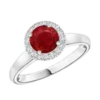
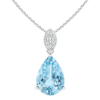
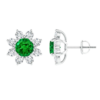
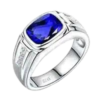
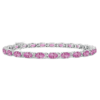

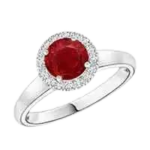 Ladies Rings
Ladies Rings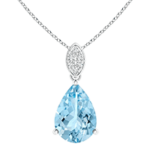 Pendants
Pendants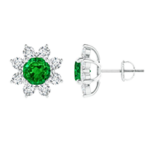 Earrings
Earrings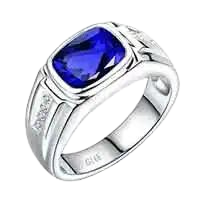 Gent’s rings
Gent’s rings